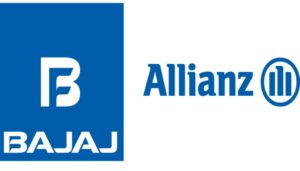New residential launches in Pune grew by 52% (YoY) in H1 2019; sales grew by 6% (YoY): Knight Frank Report

Pune, July 10, 2019: Knight Frank India today launched the 11th edition of its flagship half-yearly report – India Real Estate. The report presents a comprehensive analysis of the residential (across eight cities) and office (across eight cities) market performance for the period January – June 2019 (H1 2019). The report findings establish that the number of residential launches in Pune increased by 52% in H1 2019 to 21,396 from 14,100 in H1 2018. The housing units sold saw an increase of 6% in H1 2019 to 17,364 from 16,451 in H1 2018.
Pune’s office market witnessed the addition of just 0.14 mn sq m or 1.5 mn sq ft of new supply during H1 2019. Such acute supply crunch is forcing occupiers to scout for or enter into pre-commitments or built-to-suit (BTS) options. The information technology / information technology enabled services (IT/ITeS) sector has been the largest driver of office space in Pune. The transactions activity in Pune continues to remain robust, with the city witnessing transaction of 0.35 mn sq m (3.8 mn sq ft). The average deal size increased from 4,166 sq m or 44,843 sq ft per deal to 5,043 sq m or 54,286 sq ft per deal.
RESIDENTIAL MARKET HIGHLIGHTS OF PUNE:
· Launches grow 52% during H1 2019 to 21,396 units.
· 94% of the launches during H1 2019 were in the affordable sub-INR 7.5 million segment.
· During H1 2019, sales in Pune grew marginally by 6% YoY at 17,364 units driven by price cuts and sales of compact and OC ready homes.
· Sales in H1 2019 were curtailed by two major events-election uncertainty and GST ambiguity.
· The markets in the West region of Pune have witnessed the highest growth in sales at 15% YoY during H1 2019 followed by northern markets which witnessed sales growth of 7% in H1 2019.
· Many developers have adopted the earlier GST regime of 12% with ITC for on-going projects.
· The apartment prices in the Pune market continue to decline. Weighted average prices for Pune were down 4% YoY during H1 2019.
· Apart from reduction in base prices, several freebies such as: block prices for the entire flat irrespective of floor, which also include maintenance and clubhouse charges, various subvention plans, free appliances, assured two-year rentals, GST waivers and a host of other indirect discounts continue to remain in the market. Pre-EMI schemes are in vogue and are being used to lure homebuyers to make a site visit.
· The Quarters To Sell (QTS) for the Pune market was 3.8 quarters in H1 2019, higher than QTS of 3.3 quarters during H1 2018.
· NBFC crisis hasn’t affected the demand much in the Pune market, but it has led to an increase in cost of finance for developers to the tune of 180-250 bps
Paramvir Singh Paul, Branch Director-Pune, Knight Frank India said, “While new launches are back in the Pune market, the spurt in launches has not translated into a significant growth in sales yet. Buyers are still in the ‘wait-and watch’ mode and are waiting for prices to come down further. The current growth in residential sales has been largely driven by the affordable segments. With the latest reduction in GST rates, the tax rate is now similar to the pre-GST era where aversion to under-construction due to tax impact was lower. This is a welcome move which may help developers bring back certain segment of homebuyers back to the under-construction apartments.”
OFFICE MARKET HIGHLIGHTS OF PUNE:
· The transaction activity in Pune continues to remain robust, with the city witnessing transaction of 0.35 mn sq m (3.8 mn sq ft) which was closer to the record transaction volume recorded in H1 2018 of 0.36 mn sq m.
· Around 0.07 mn sq m or 0.8 mn sq ft of the transactions were pre-commitments.
· On account of addition of transactions outpacing the addition of new office space, the overall city level vacancy came down from 5.7% in H1 2018 to 5.2% in H1 2019.
· In H1 2019, saw the IT/ITeS sector take up 0.19 mn sq m (2.1 mn sq ft), which translates to 55% share of the total space transacted during H1 2019, a significant jump from the 30% during H1 2018. The Other Services sector which includes e-commerce, consulting, co-working, media, etc. had the second highest share of the space transacted during H1 2019, garnering 22% share of transactions during H1 2019.
· In H1 2019, co-working operators transacted around 0.04 mn sq m or 0.4 mn sq ft of office space which translates into 44% of the space transacted by Other Services Sector.
· The office markets of secondary business district (SBD) East, peripheral business district (PBD) East and SBD West continued to witness strong double-digit growth in rentals, with rents in these markets growing at 12% YoY, 14% YoY and 11% YoY, respectively.
· Occupiers continued to consolidate their operations by moving into larger space. The average deal size increased from 4,166 sq m or 44,843 sq ft per deal to 5,043 sq m or 54,286 sq ft per deal.
Paramvir Singh Paul, Branch Director-Pune, Knight Frank India said, “The office market has continued its robust performance in H1 2019. The problem of supply crunch showed no signs of abating and the impact was evident in the significant number of pre-commitment deals in H1 2019. The vacancy levels in NCR were at a historic low of 5.2%. This coupled with the robust demand from occupiers is adding significant upwards pressure on the rentals.”








